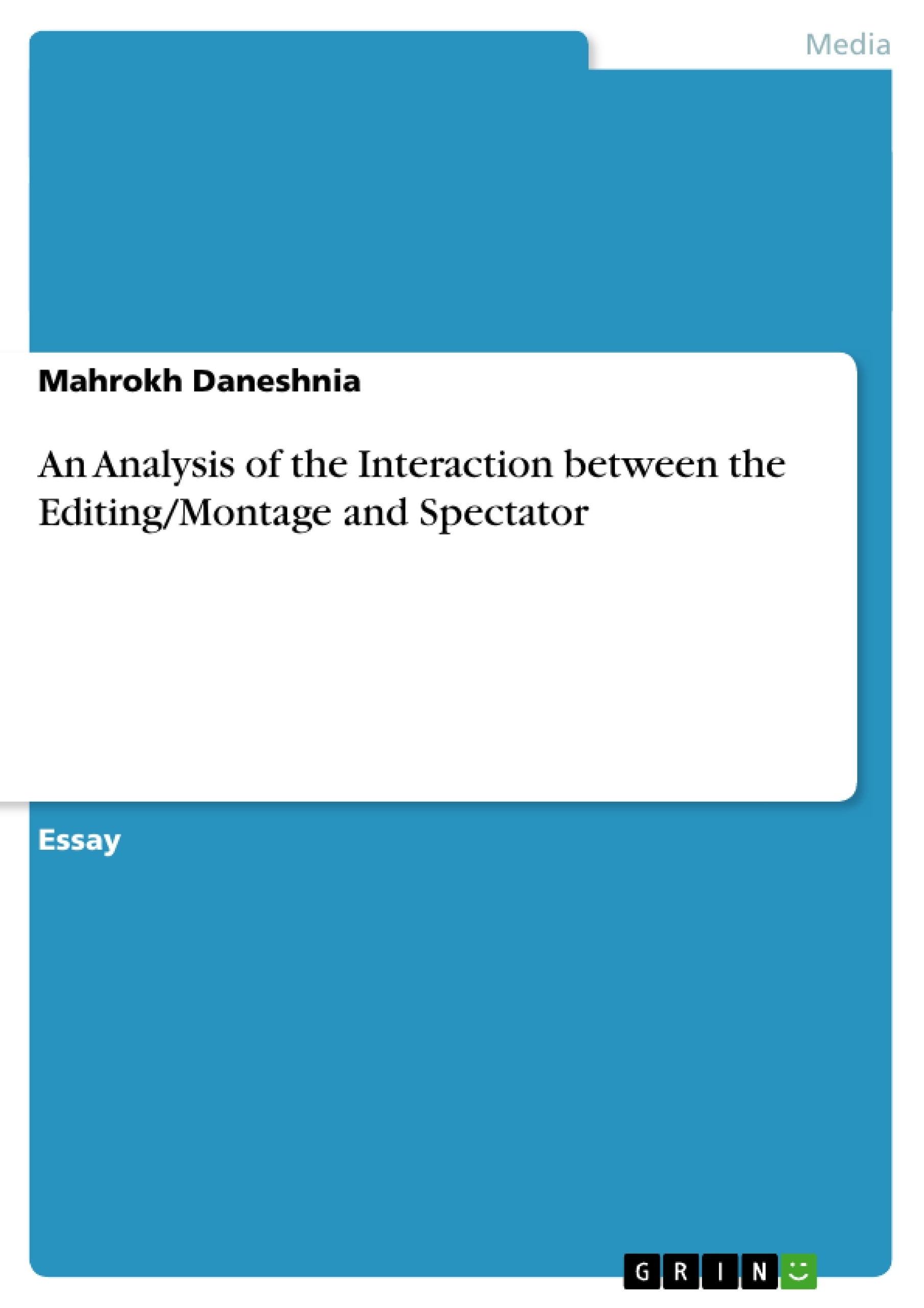This essay analyses early theories in regards to editing and montage as a film form and its relationship to the meaning that it creates in spectator’s mind. The main statement to prove in this essay is that controlling editing methods ignores the spectator’s imagination and conflictive editing is the right method to interact with spectator’s mind creatively. The essay considers Hugo Munsterberg, Sergei Eisenstein and Vsevolod Pudovkin’s essays by clarifying the major points and debating the similarities and dissimilarities between the three arguments.
An Analysis of the Interaction between the Editing/Montage and Spectator
This essay analyses early theories in regards to editing and montage as a film form and its relationship to the meaning that it creates in spectator’s mind. The main statement to prove in this essay is that controlling editing methods ignores the spectator’s imagination and conflictive editing is the right method to interact with spectator’s mind creatively. The essay considers Hugo Munsterberg, Sergei Eisenstein and Vsevolod Pudovkin’s essays by clarifying the major points and debating the similarities and dissimilarities between the three arguments.
The first essay to analyse is “The Photoplay” by Munsterberg. The German-American psychologist does not use the term “editing” in his work but he mentions parallel editing, cut backs, close ups, flash-forwards and flashbacks, which are his way of describing editing. He believes that the combination of different scenes, actions and rhythms and also enlargement of small details or close-ups, are all derived from the psychological process of the human mind. For instance when he talks about cut-backs or going back to an earlier scene, he considers the psychological aim of cut-backs the most interesting of all. Cutting back to a precedent scene recognizes the mental act of remembering and it forms the reality by the demands of our soul. The same principle stands true with flash-forwards, only this time they deal with the close or distant future and the mental process of imagination replaces the memory. The “photoplay” that is the word used by Munsterberg for film is capable of following the rules of mind rather than the restrictions of real world. Another method which Munsterberg discusses is parallel editing. He believes that unlike theatre, film has the ability to take the spectator into different spaces, ignoring all the geographical and physical limitations. In other words the photoplay makes it possible to mentally and visually travel through various imaginative worlds. Munsterberg is also interested in spectator’s attention as another mental element. He believes that in theatre spoken word is the main tool to direct the spectator’s attention. In photoplay, movements, close-ups and editing techniques replace the use of words and pictures control spectator’s attention. In his opinion music and other noises do not offer the same importance as pictures do. What spectator perceives is controlled by the events on the screen and a series of exciting emotional events control the involuntary attention, forcing the spectator to react to certain actions.
[...]
- Quote paper
- Mahrokh Daneshnia (Author), 2013, An Analysis of the Interaction between the Editing/Montage and Spectator, Munich, GRIN Verlag, https://www.grin.com/document/271504
-

-

-

-
Upload your own papers! Earn money and win an iPhone X. -

-
Upload your own papers! Earn money and win an iPhone X. -

-
Upload your own papers! Earn money and win an iPhone X.

